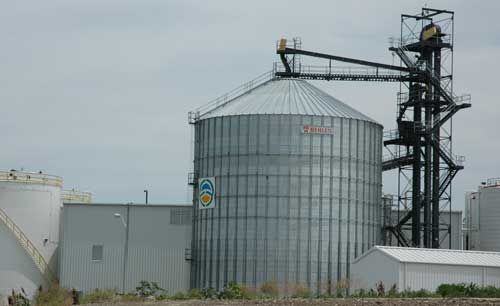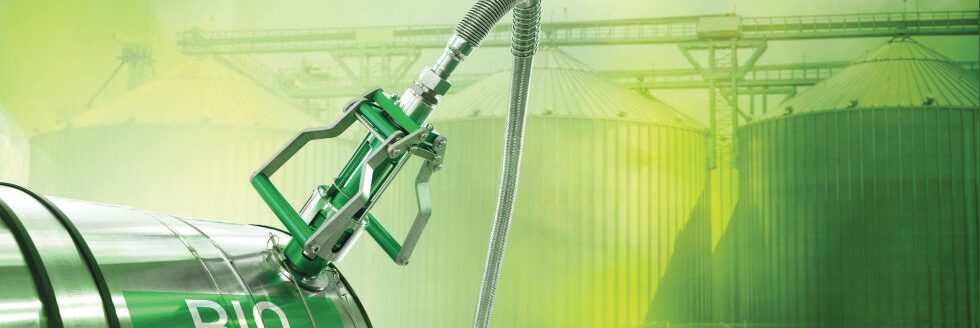Makers of biodiesel and renewable diesel fuels are engaged in an all-out push to get the Environmental Protection Agency to increase the biomass-based diesel and advanced biofuels volumes in the Renewable Fuel Standards for 2023, 2024 and 2025.
Michael McAdams, president of the Advanced Biofuels Association, said it was a “very significant and pivotal moment” as time runs out for the EPA to change its mind. At a video press conference June 12, McAdams said the RFS “has been a driver for investments” by the alternative fuels industry that has resulted in a biomass diesel pool that has overshot predictions.
The success of biodiesel and renewable diesel is “especially relevant in the heavy-duty space” said McAdams, such as marine equipment and construction equipment, where there is as yet no cost-effective options for electrification—and no need to modify existing equipment. Renewable diesel is a “drop-in” fuel that can result in carbon emissions reductions of up to 80%.
But EPA has “flatlined all categories of renewable low-carbon fuels for three years,” McAdams said. Scott Lewis, president of WESupply Zero LLC, said his company is one of only two producers of sustainable airplane fuel in the United States. “EPA’s latest proposal does not reflect industry’s actual production capacity or investments to enhance capacity in the long term,” he said. Dave Kettner, president of Virent, said drop-in SAF has been successfully used in demonstration flights by United Emirates Airlines, GulfStream, Rolls Royce and Bell Helicopter. “We are just starting to move SAF forward,” he said.
Clean Fuels Alliance America and 75 industry stakeholders delivered a letter on June 8 to President Joe Biden, urging him to ensure the EPA substantially increase the biomass-based diesel and advanced biofuels volumes in the Renewable Fuel Standards for 2023, 2024 and 2025. Clean Fuels was joined in the letter by several national industry associations and their members, including the American Soybean Association, 22 state soybean associations, Diesel Technology Forum, National Energy and Fuels Institute, National Oilseed Processors Association, North American Renderers Association, and U.S. Canola Association.
The letter points out that EPA’s proposed volumes fall far below the industry’s current production and, if finalized, would undermine ongoing investments in the industry’s expansion. “EPA must substantially increase the RFS’ biomass-based diesel volumes to account for actual production,” the letter urges. “The proposed RFS volumes simply do not provide sufficient market space for the fuels that are produced and available now to help numerous industries decarbonize their transportation footprint. The low volumes threaten the ability of new market sectors, like marine and aviation, to decarbonize in the near term.”
The signatories asked EPA to annually increase the biomass-based diesel volumes by 500 million gallons. “Given the demonstrated increase in production in the first four months of this year, the request is very conservative,” the letter continues. “As your administration reviews the RFS rule for 2023, 2024, and 2025 before its final release on June 14, we ask that you ensure a true upward trajectory for the program’s volumes to further facilitate the growth of homegrown, low-carbon, advanced biofuels.”
Kurt Kovarik, vice president of federal affairs with Clean Fuels, added, “Our members, agriculture partners, and fuel users have all made significant investments to grow the industry, and those investments are already paying off. In the first months of 2023, the clean fuels industry increased biodiesel and renewable diesel production by more than 200 million gallons.” The additional biodiesel and renewable diesel gallons produced in the first four months of this year have filled three times over the increase in BBD volumes that EPA proposed for the entire year, CFAA said in an accompanying press release. “In fact, the additional biodiesel and renewable diesel gallons generated in the first four months of 2023 have filled the total volume increase that EPA proposed for the entire three-year rule period—2023, 2024 and 2025.”
“EPA must follow through on its promise of an upward trajectory for RFS volumes,” Kovarik continued. “As capacity and production grows, the economic benefits will increase—unless EPA fails to get the RFS volumes right.”
The letter is available for download on cleanfuels.org.
David Murray can be reached at [email protected].




